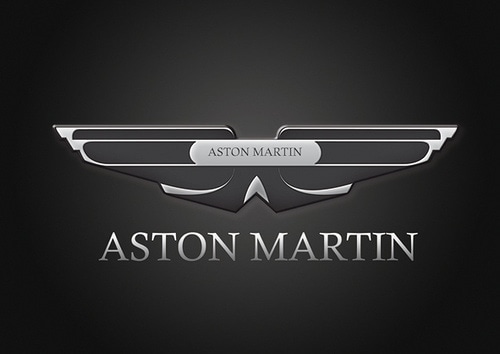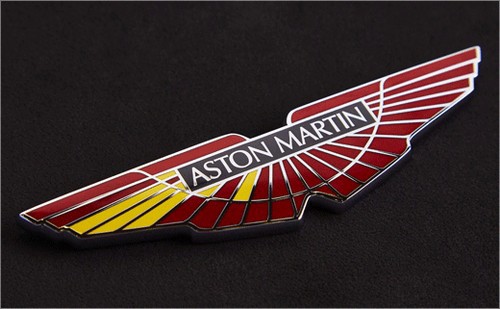The Marketing mix of Aston Martin analyses the 4Ps of Aston Martin, including the Product, Price, Place, and Promotions. Aston Martin Lagonda Limited is referred to as Aston Martin for convenience. It is a private limited company of British origin. The iconic company is associated with the automotive industry as it deals in the manufacturing of luxury vehicles.
It was founded in 1913 by its co-founders, Robert Bamford and Lionel Martin. Aston Martin is the parent company of its subsidiaries, Lagonda, which is wholly owned, and Aston Martin Racing, which has 50% shares. The famous brand faces competition from the following brands.
- Ferrari
- Maserati
- Automobili Lamborghini
- McLaren
- Audi
- Bentley Motors
- BMW Group
- Rolls Royce Motor Cars
- Porsche
- Mercedes-Benz
About Aston Martin
- Type: Luxury car manufacturer
- Industry: Automotive
- Founded: 1913
- Founders: Lionel Martin and Robert Bamford
- Headquarters: Gaydon, Warwickshire, England
- Area served: Worldwide
- Current CEO: Tobias Moers
- Number of employees: Over 3,000
- Major products: Sports cars, grand tourers, and SUVs
Table of Contents
Aston Martin Product Strategy
Aston Martin is a name to reckon with in the automobile sector as it manufactures grand tourers and luxury sports vehicles. The company has offered its branding to several projects related to real estate, apparel, monster trucks, bicycles, submarines, and speedboats.
Aston Martin, a prestigious British manufacturer of luxury sports cars, offers a product mix that emphasizes performance, luxury, and exclusivity.
The new Product Mix of Aston Martin in 2024 is as follows (Source).
- Sports Cars: This category is the core of Aston Martin’s offerings, featuring high-performance sports cars known for their distinctive design and superior engineering. Models like the Vantage and DB11 fall into this category, offering luxury and performance.
- Grand Tourers: These are luxury cars designed for high-speed and long-distance driving. Models like the DBS Superleggera and the Vanquish epitomize this category, offering comfort, style, and powerful performance.
- Limited Edition Models: Aston Martin periodically releases limited edition models that often become collectors’ items. These cars, like the Valkyrie and the One-77, are known for their unique design, advanced technology, and exclusivity.
- Luxury SUVs: Expanding its portfolio, Aston Martin has ventured into the luxury SUV market with models like the DBX. This move caters to the growing demand for high-end SUVs, combining Aston Martin’s signature style and performance with the practicality of an SUV.
- Customization Services: Through its ‘Q by Aston Martin’ service, the company offers extensive customization options for buyers. This allows customers to personalize their vehicles to a high degree, from bespoke color choices to unique interior finishes.
- Aston Martin Heritage Models: The company also maintains a heritage line, which includes the restoration, maintenance, and sale of classic Aston Martin models, catering to enthusiasts of vintage cars.
- Collaborations and Special Projects: Occasionally, Aston Martin collaborates on special projects, such as luxury boats, submarines, and even real estate projects, showcasing the brand’s versatility and luxury appeal beyond cars.
- Merchandise: Besides cars, Aston Martin offers a range of branded merchandise, including clothing, accessories, and model vehicles, extending its brand appeal to a lifestyle choice.
This diverse product mix underscores Aston Martin’s legacy in luxury sports cars and illustrates its focus and adaptability to changing market trends and customer preferences in the luxury segment.
Aston Martin Pricing Strategy
By the end of the financial year 2016, Aston Martin posted its revenues and operating income at 593.5 million Euros and 16 million Euros, respectively. Its estimated revenues are assumed to be 975 million US dollars and are considered the fourth highest amongst its competitors.
The brand deserves attention as it is a status symbol for a wealthy lifestyle. Its products demand high maintenance, and no one can care for their vehicle. This is why the brand has targeted its target audience to only the affluent class that does not have to think twice before making a purchase and after maintaining its high maintenance. The cars are built with high-profile people in mind who would be glad to be associated with such a known brand.
Aston Martin has adopted a high premium pricing to sell its exclusive vehicles. It has successfully maintained its pricing policy because of its wealthy clientele that is proud to be owners of an Aston Martin. It faces stiff competition from certain exclusive brands, but the company has maintained its premium pricing policy because it is sure of its brand image and loyal customers.
Aston Martin’s pricing strategy is critical to its brand positioning as a purveyor of luxury and exclusivity in the automotive industry. As a marketing and advertising expert, let’s explore their pricing approach:
- Premium Pricing Model: Aston Martin adheres to a premium pricing strategy, placing its vehicles in the highest price brackets of the automotive market. This pricing reflects the brand’s emphasis on luxury, superior craftsmanship, and performance, catering to an affluent customer base that values exclusivity and prestige.
- Value-Based Pricing: The pricing is aligned with the brand’s perceived value. Each Aston Martin car is not just a vehicle but a symbol of status, luxury, and cutting-edge technology, which justifies its high price point. The brand’s heritage, design excellence, and engineering prowess influence this value perception significantly.
- Limited Edition Premiums: For limited edition models or special releases like the Valkyrie or DBS Superleggera, Aston Martin employs even higher pricing. Often produced in limited numbers, these models are priced for their exclusivity, advanced features, and collectible status.
- Customization and Personalization Costs: Aston Martin offers extensive customization options through its ‘Q by Aston Martin’ service. This bespoke personalization can significantly increase the final price of the vehicle, with pricing based on the level and complexity of the customizations chosen by the buyer.
- Dynamic Pricing for Market Variations: Aston Martin’s pricing strategy is also dynamic, considering regional economic factors, currency fluctuations, and local market demand. This approach ensures that the brand remains competitively positioned in different global markets.
- Strategic Pricing for New Market Segments: With the introduction of new models, like the DBX (SUV), Aston Martin strategically sets prices to compete in new market segments while still maintaining its luxury brand image.
- Exclusivity and Rarity Factor: The brand’s pricing strategy is also influenced by the exclusivity and rarity of its vehicles. By producing a limited number of units, Aston Martin creates a sense of scarcity, which adds intrinsic value and justifies the high price tags.
Through this comprehensive pricing and marketing strategy, Aston Martin successfully maintains its status as a luxury icon in the automotive world, attracting a niche market of affluent customers who seek the prestige and exclusivity associated with the brand.
Aston Martin Place Strategy
Aston Martin already has an international market presence that has spread to six continents, including fifty countries like Turkey, Qatar, China, Austria, France, Denmark, Riyadh, Jordan, Germany, Greece, Monaco, Italy, Russia, Sweden, Canada, Peru, United States, South Africa, United Kingdom, and Kuwait. The company has opened a showroom in Abu Dhabi at Etihad Towers. This move cements its place in the UAE. It has its headquarters base and leading manufacturing site at Warwickshire in England.
Aston Martin has a strong distribution network, including dealership programs and sales promotions at its exclusive showrooms. In the Americas, the company operates via forty-six dealers. All its showrooms are situated in locations that speak of luxury and class.
The brand is particular in maintaining its high profile and unique image and thoroughly searches before finalizing a location. The store has a classic ambiance that speaks of elegance and wealth. It offers personalized sales services to its potential customers.
Here’s Aston Martin’s place strategy.
- Exclusive Dealerships: Aston Martin sells its vehicles through a network of exclusive dealerships in critical global markets. These dealerships offer a high-end buying experience that aligns with the brand’s luxury and exclusivity.
- Strategic Global Presence: The company strategically places its dealerships in affluent and economically strong regions worldwide, including major cities in Europe, North America, Asia, and the Middle East, targeting markets with a high concentration of potential luxury car buyers.
- Boutique Showrooms in High-End Locations: Aston Martin often locates its showrooms in upscale areas, often near other luxury brands. These boutique showrooms enhance the customer experience and reinforce the brand’s luxury positioning.
- Online and Digital Platforms: Understanding the importance of digital presence, Aston Martin provides comprehensive online platforms. These platforms showcase their car models and features and offer potential buyers virtual consultations and customized digital experiences.
- Limited Distribution for Exclusivity: Aston Martin limits the number of vehicles produced and the locations where its cars are sold to maintain its exclusivity. This scarcity and selectivity in distribution add to the allure and prestige of owning an Aston Martin vehicle.
Aston Martin Promotion Strategy
Aston Martin enjoys worldwide recognition and brand awareness. It is a robust and influential brand that has created a niche market. The company believes in direct business dealings to establish a meaningful connection between the brand and the customer. It has adopted a marketing policy that enables it to promote its products via magazines and billboards.
The company realizes the positive impact of social media platforms in its market research, creating a direct customer connection, and hence is very active via its Instagram and official website. By the end of May 2018, Aston Martin had a fan following of 6.9 million and 1.1 million on the Facebook page and Twitter account, respectively. In an unprecedented move, the company has targeted females as its potential customers, aside from males.
Aston Martin has been part of the racing circuit and has won acclaim and recognition because of its high success. In 1959, the DBR1 Team won the famous Le Mans 24hr and Nurburgring 1000km races. Aston Martin Rapide S finished in second place in the 24 Hours Nurburgring race in 2010, and it was the first of its kind to race with hydrogen fuel.
The brand has the distinction of having a Royal Warrant since 1982 as a supplier of motorcars to the Prince of Wales. Aston Martin has entered into a partnership deal with Red Bull and will act as the title sponsor since 2018 with a new title, Aston Martin Red Bull Racing.
It has been associated with James Bond movies as the cars have been featured in several films. Aston Martin has been the recipient of several awards and recognition. Aston Martin DB11 won Most Beautiful Car of 2017 at the Golden Steering Wheel Award.
Some Recent Video ads and Print ads for Aston Martin are:
Liked this post? Check out the complete series on Marketing Mix

